In this section, various analyses of the Color Corruption database (POX) are performed to understand how different daily newspapers cover corruption. The most basic metrics are the percentage of front pages that carried corruption stories and the surface area these stories occupied:
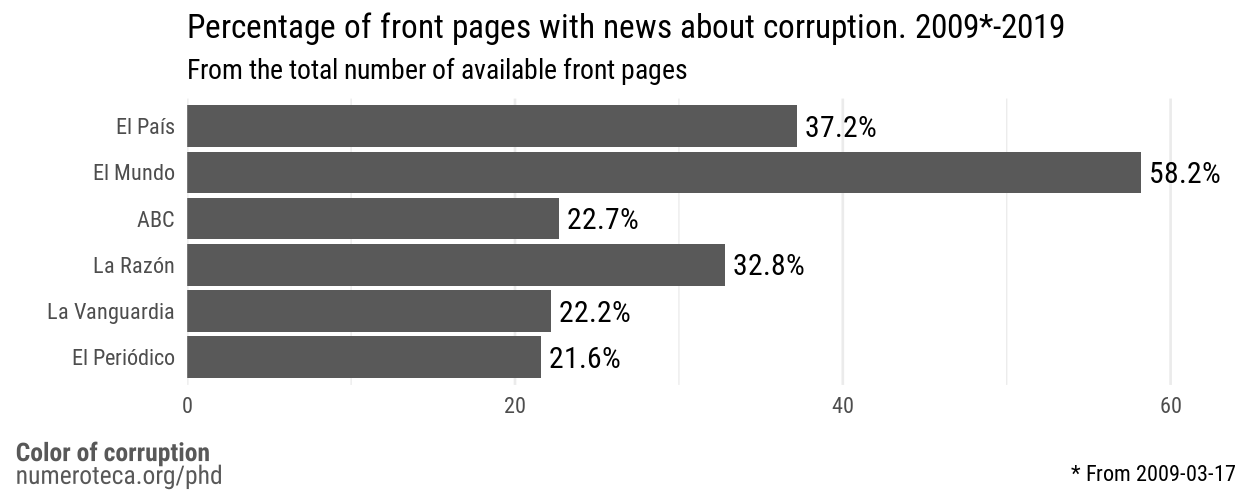
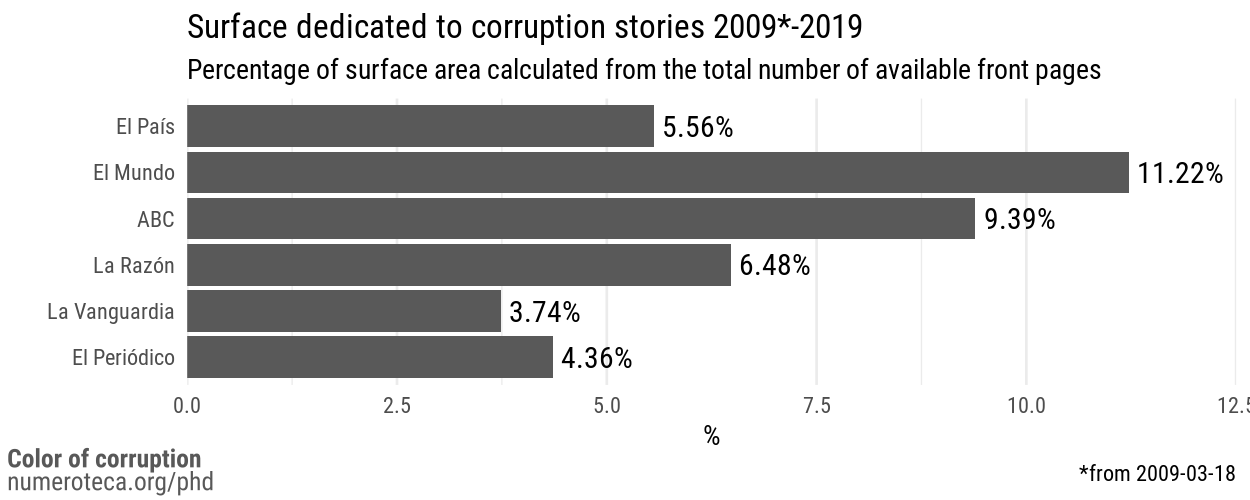
Code: percentage of front pages with at least one corruption news. Plot: percentage of area dedicated to corruption. Full period.
El Mundo is in the first position in both metrics, carrying corruption stories on 58.2% of its front pages (Fig. 317 and 318). ABC carries corruption stories in ~23% of its front pages, almost tied in the last position with the Catalan newspapers, but is in the second position by the percentage area it dedicates to corruption. This is related to its design, which features full-page news on the front page.
Consistent with the existing literature, each newspaper had a distinct color footprint regarding the institutions, mainly political parties, covered in their corruption stories (Fig. 319 and 320) (Baumgartner & Chaqués-Bonafont, 2015; Davesa & Palau, 2013).


For easier comparison, each institution is displayed separately to quickly show the relative coverage values of each political party and institution per newspaper (Fig. 321).


9.6.1 Partisan alignment #
When these data are crossed with what the readers of each newspaper declared that they would vote (based on CIS barometer data from December 2019) for the cases of PP and PSOE there is a strong negative correlation: the more news coverage on corruption, the less likely the readers are going to vote that political party (Fig. 322 and 323). It could also be the other way around.
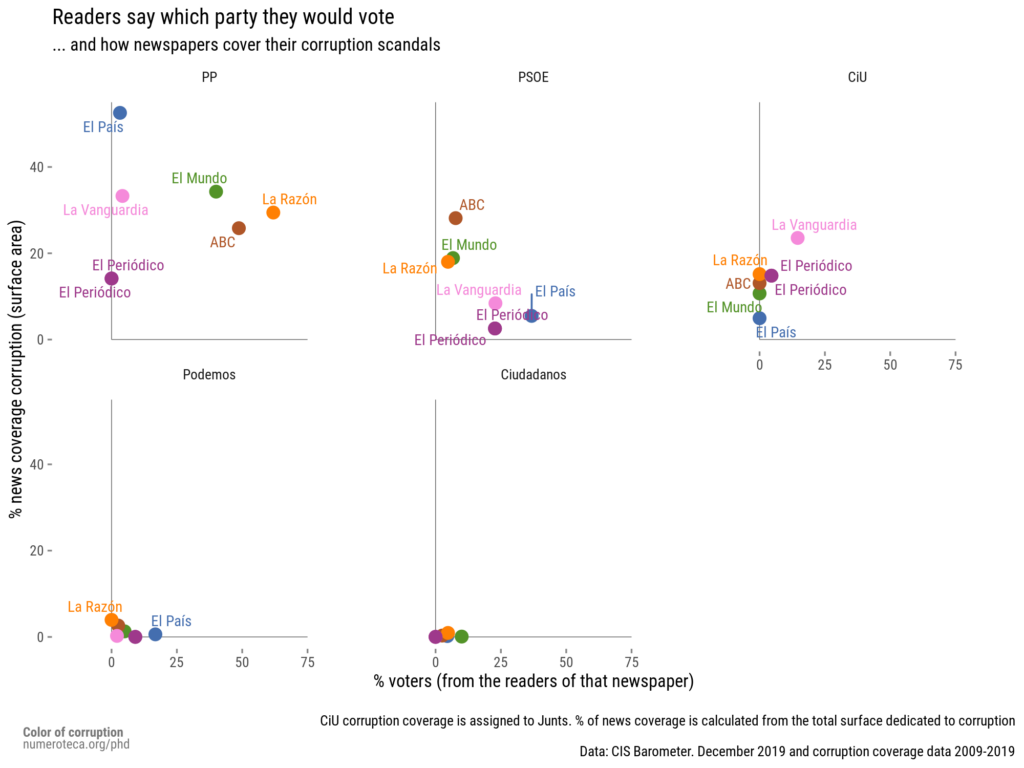
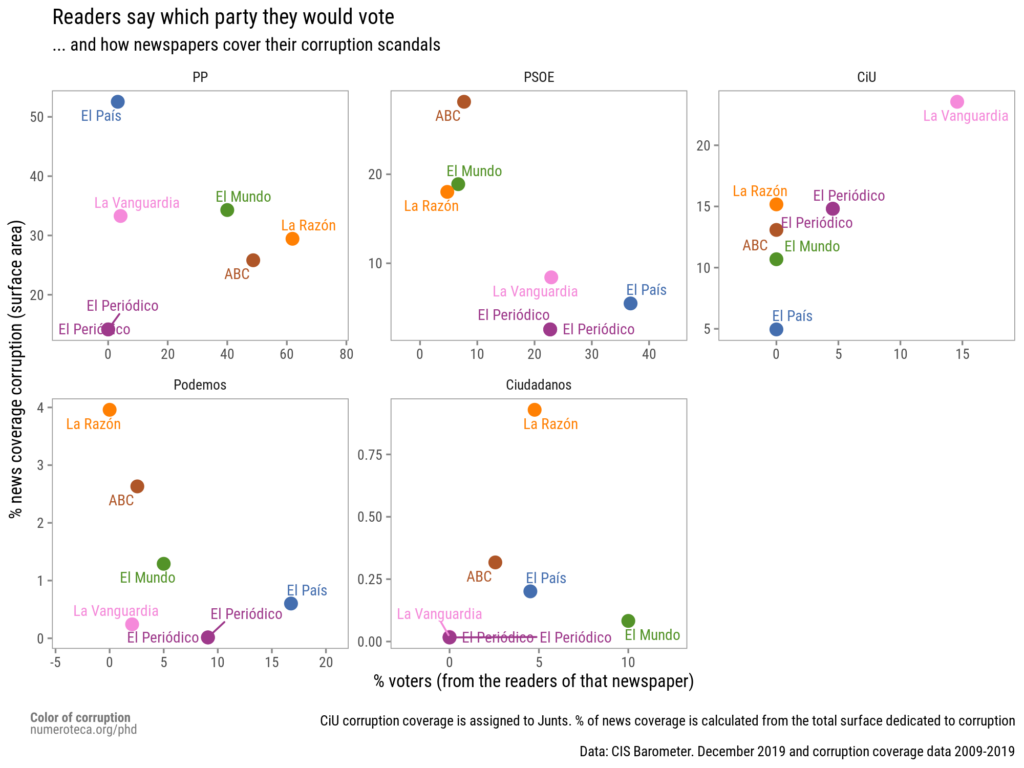
If the framing of the coverage is analyzed, the most conservative newspapers stand out as PP and Casa Real defenders. La Razón dedicates more than half of the surface area to defend them, 52.3 and 52.4%, respectively, closely followed by ABC. El País is the newspaper that dedicates more of its coverage to defending the socialist party (24.1%), far from the second, La Vanguardia (10.6%).

Repeating the scatter plots only using the attack framing of the coverage dedicated to corruption makes the differences even bigger, especially in the PP panel, where ABC and La Razón move down, as around half of the coverage was defensive (Fig. 9 and 10). Both PP and PSOE panels show the disposition of the points following a diagonal.
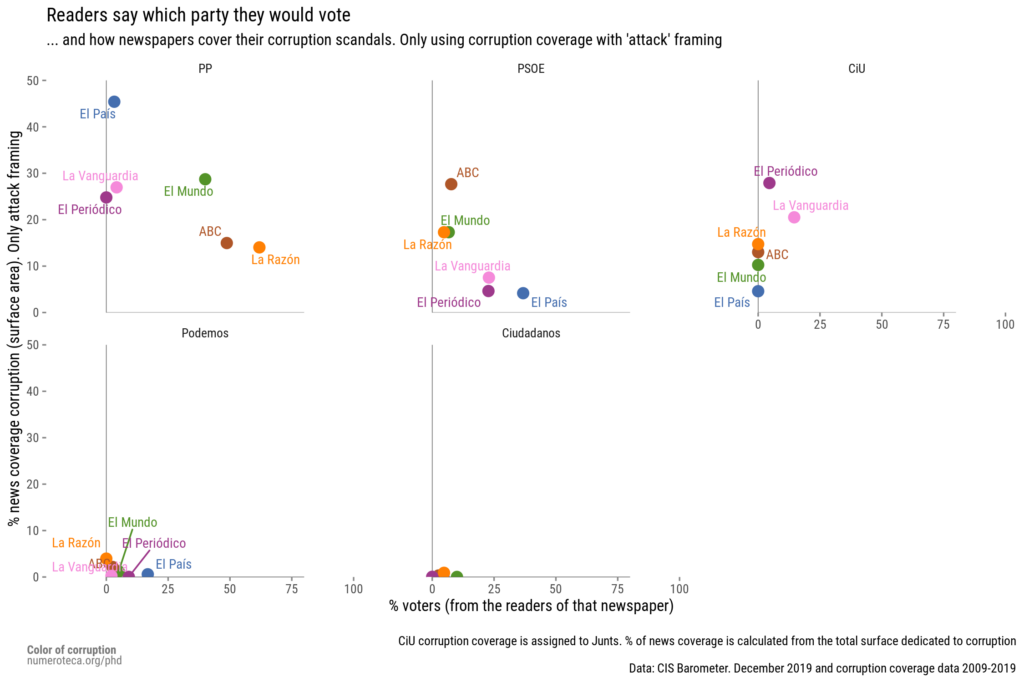
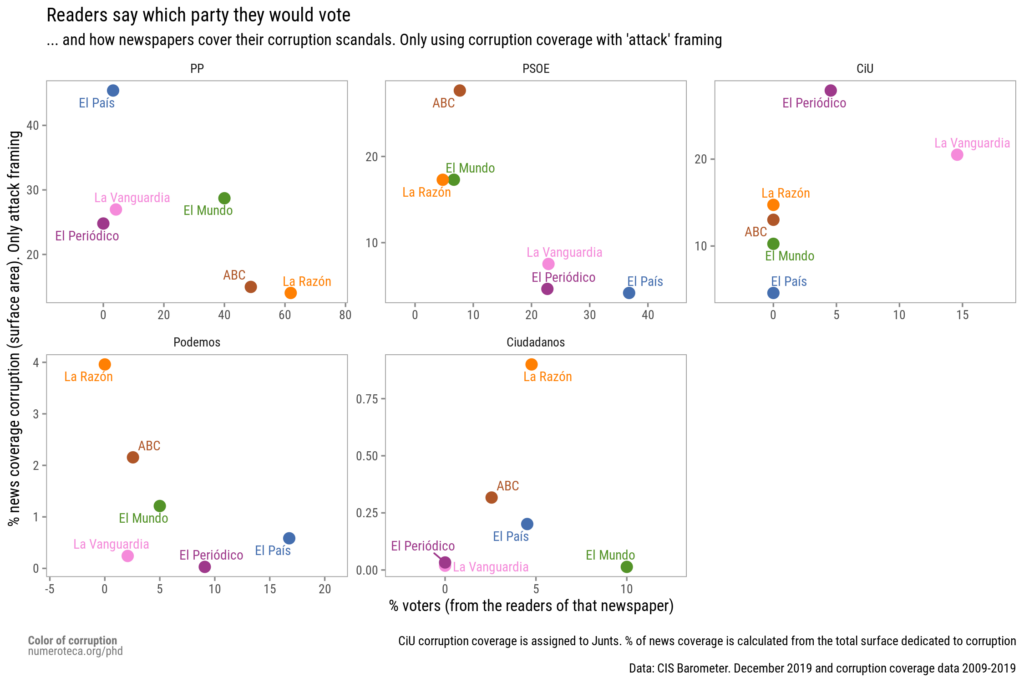
When regression lines are drawn, the image is more clear, specially for certain parties that got enough coverage and vote share (Fig. 11). When the negative coverage is used, the regression lines are negative for PP, PSOE, and Podemos, and positive for CiU and Ciudadanos, but the points do not align well for these two parties. When the defense framing is used, PP and CiU obtain clear positive correlations. They have newspapers defending or providing a positive view of the scandal coverage. For the case of PSOE and Podemos, results are not conclusive and it must be noted that the percentage of positive coverage is below 1.5%, in contrast with the others political parties previously analyzed, where the maximum values are around 3 or 15 percent.
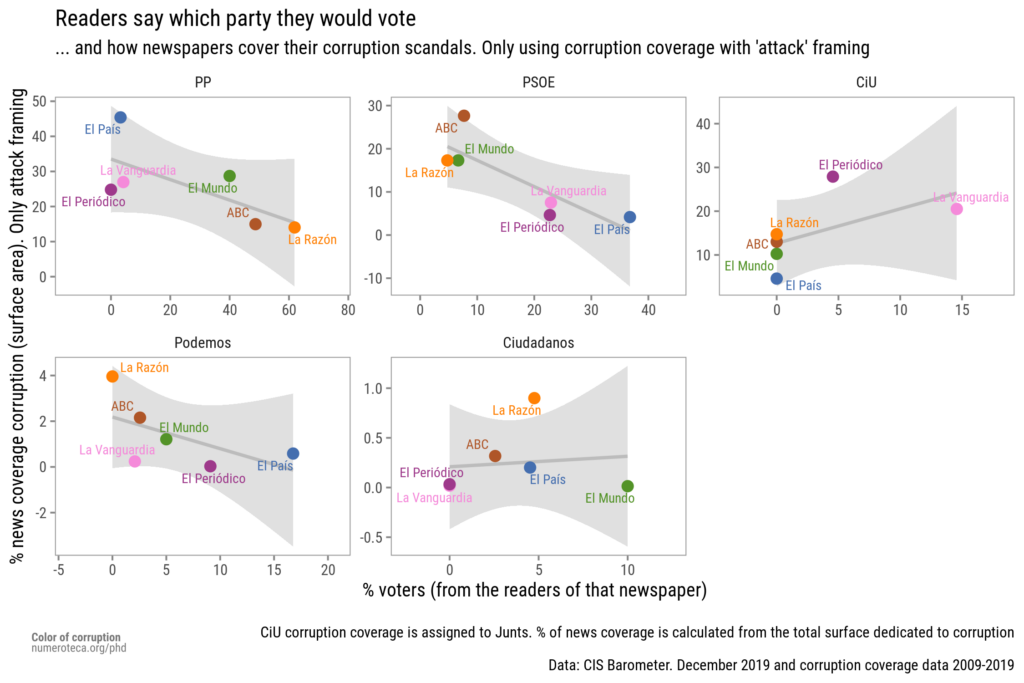
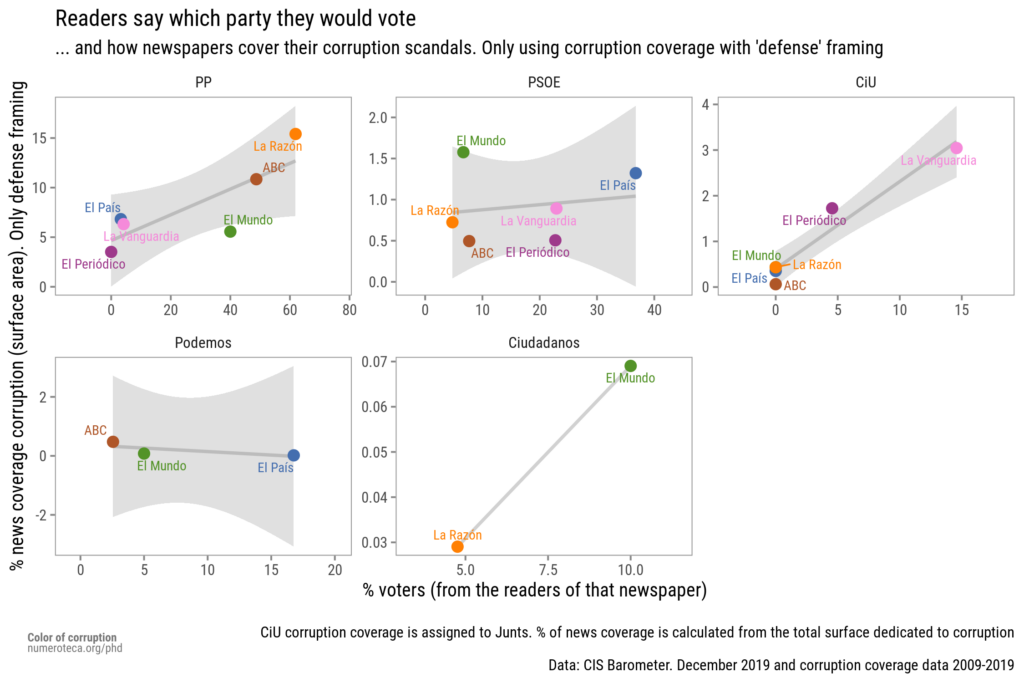
The results provided by this analysis suggest a strong polarization and partisanship of the main Spanish newspapers and are consistent with Hallin and Mancini (2004). Newspapers select and frame their corruption coverage partisanly, at least in the way they cover corruption-related scandals. The more negative coverage, the less likely their readers will vote for that party. It can also be the other way around: readers read newspapers with less prominence corruption scandals about the party they plan to vote for and more about their political rivals. It can also be that voters of a party will try to read newspapers that would attack the rivals and defend their own party.
When calculated their Pearson’s r correlation coefficient using only the attack framing, PP gives statistically significant results (r= -0.967, p-value=0.032) if only using the national newspapers, leaving aside the Catalan newspapers where PP has almost no voters (Fig. 328). PSOE also has strong negative correlation (r=-0.832, p-value = 0.039) when considering the 6 newspapers. Podemos obtains also negative correlation, but with a higher p-value (r=-0.818, p-value = 0.182).
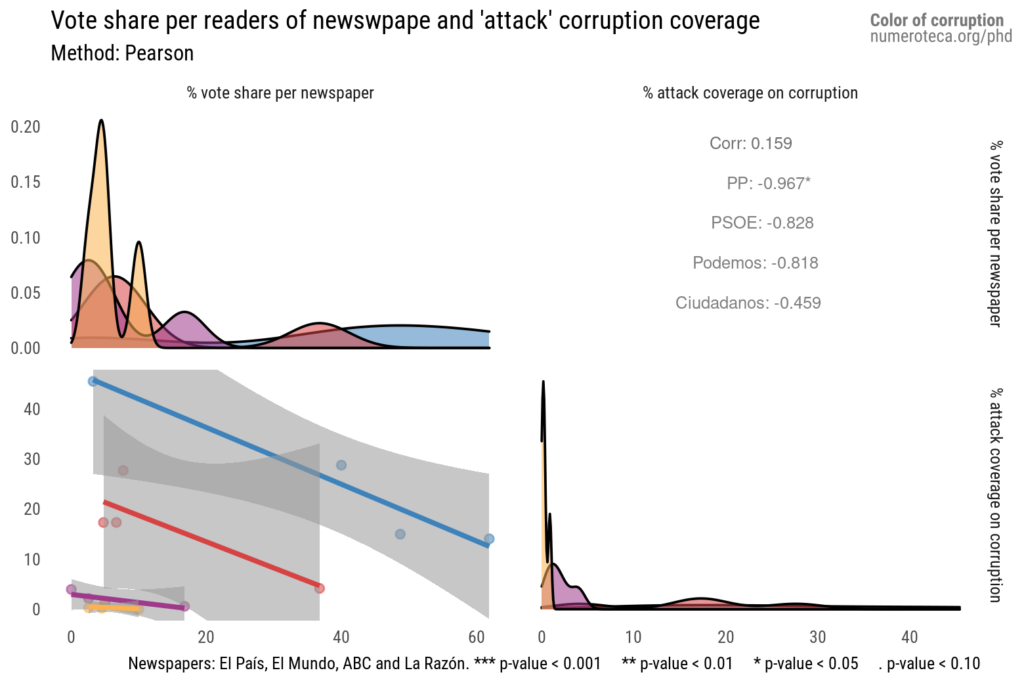
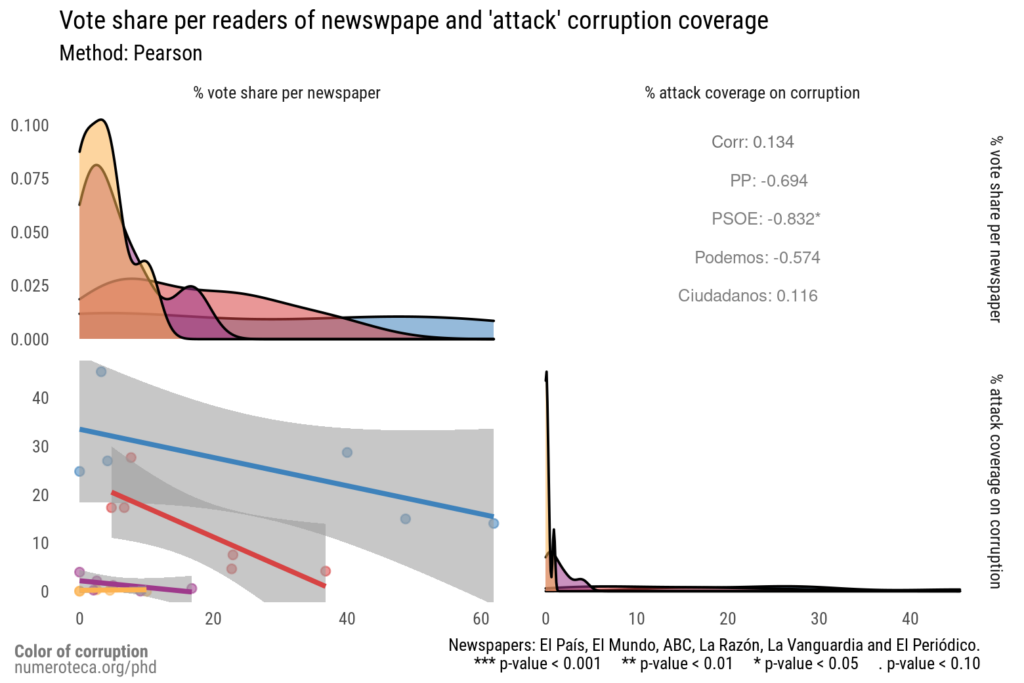
The framing by scandal shows similar results, where the scandals that affect the PP are framed more positively by conservative newspapers (e. g. Gürtel, Cifuentes’ Master, Taula, Panama Papers), and the ones that affect the PSOE by El País (e. g. ERE, Faisán).

The most extreme case is the scandal related to Pedro Sánchez’s doctoral thesis (President of Spain from the PSOE party), accused of plagiarism, where ABC dedicated 10 days of full front page stories to the attack frame (see Annex 15.2.8) where El País only used a defensive frame (Fig. 331).

ERE scandal, which affected the socialist party in Andalusia and finally convicted two of its presidents, is also extreme in the way it is covered. The conservative newspapers dedicated far more space than the others: ABC above 15% and La Razón 8.6% of its corruption coverage, whereas El País only ~2.5%.
9.6.2 Amount of information
(…)
9.6.3 By month and year
(…)
9.6.4 News position on front page
(…)
Bibliography in this section #
Baumgartner, F. R., & Chaqués-Bonafont, L. (2015). All News is Bad News: Newspaper Coverage of Political Parties in Spain. Political Communication, 32(2), 268–291. https://doi.org/10.1080/10584609.2014.919974
Davesa, F., & Palau, A. M. (2013). The Impact of Media Coverage of Corruption on Spanish Public Opinion. Revista Española de Investigaciones Sociológicas, 144. http://reis.cis.es/REIS/PDF/REIS_144_05_ENGLISH1381482849627.pdf